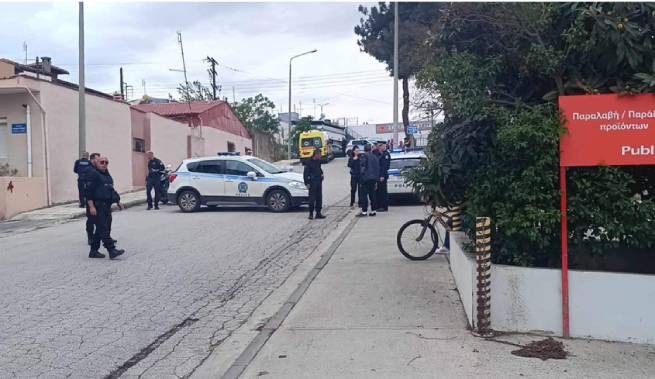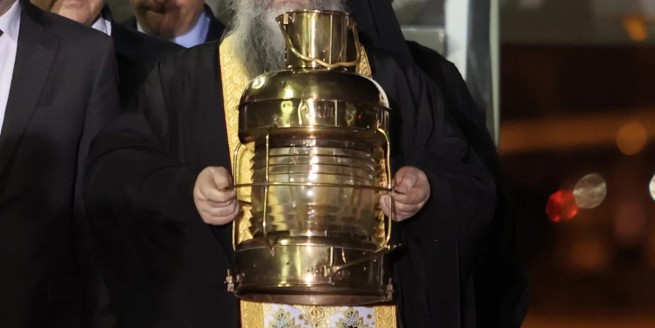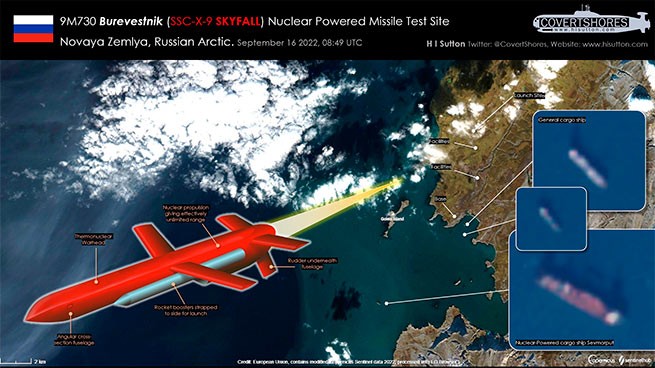Russian President Vladimir Putin said the final test of the cruise missile 9M730 “Burevestnik” with unlimited flight range was completely successful.
This is the world’s first cruise missile equipped with a nuclear engine. The Burevestnik missile, first announced in 2018, has a potentially unlimited range. Its engine runs on nuclear fuel and can carry a nuclear warhead.
Президент России Владимир Путин заявил, что заключительное испытание крылатой ракеты 9М730 "Буревестник" с неограниченной дальностью полета прошло полностью успешно. pic.twitter.com/CYjIgYfazd
— Athens News (@russianathens) October 6, 2023
The existence of such weapons is seen as critical to changing the balance of global security, since they are a reliable weapon against the “collective West.”
In Russia, the final stage of its creation began perhaps in 2017, but already has about 20 years of research. Some say development began during the Cold War.
The rocket has virtually no restrictions on its flight range: it can stay in the air for many years in a row! Moreover, all this time its flight can take place at supersonic speed, which means it is more difficult to intercept it and it is assumed that it will be equipped with systems for shooting decoys. The Burevestnik uses an open-type direct-flow gas turbine, unlike the Poseidon, where a closed-type gas turbine is used in the same reactor, where the exhaust and cooled gas is returned back to the reactor.
The missile, codenamed “Skyfall” by NATO, is said to be equipped with a nuclear reactor that must be turned on after solid-fuel launch vehicles lift it into the air.
Satellite images posted on social media last month showed Russia had recently built new facilities in the remote Arctic region where Soviet troops previously conducted nuclear tests. The images show construction work on Novaya Zemlya, an island archipelago in the northern Barents Sea.
“Now we have practically completed work on modern types of strategic weapons, which I spoke about and announced several years ago,” Putin said yesterday at a meeting in Valdai.
In the summer of 2019, there was a fatal accident on a test platform in the Barents Sea that delayed the missile’s development, but the missile has now passed the test, according to statements from the Russian leader.
On August 9, 2019, the Russian atomic energy agency Rosatom confirmed the release of radiation at State Central Naval Test Site in Nenoksa near Severodvinsk, in northern Russia, and said it was linked to an accident testing “an isotope energy source for a liquid rocket engine.” Five scientists involved in the development of this weapon were killed. According to CNBC, the explosion occurred during an attempt to retrieve a rocket from the seabed that was lost during a previous failed test.
On October 10, Thomas DiNanno, a member of the US delegation to the First Committee of the UN General Assembly, stated that the “Skyfall incident” on August 8 […] was the result of a nuclear reaction that occurred during the recovery of a Russian nuclear cruise missile” that “remained on the seabed of the White Sea after a failed test early last year.”
On August 26, Alexei Karpov, Russia’s envoy to international organizations in Vienna, said that the accident was related to the development of weapons, the creation of which Russia was supposed to begin as “one of the measures in connection with the US decision to withdraw from the Anti-Ballistic Missile Treaty.”
On November 21, at the ceremony of presenting posthumous awards to the families of the victims, Vladimir Putin said that the scientists who died in the explosion on August 8 tested “unparalleled” weapons: “We are talking about the most advanced and unparalleled technical ideas and solutions for creating weapons that will ensure Russia’s sovereignty and security for decades to come.”
He also noted that “weapons must be brought to perfection, no matter what,” setting the tone for his leadership: The Motherland comes first!







More Stories
China: highway collapse, dozens of victims and injured (video)
A terrible tragedy in Kyrgyzstan: a truck hit 29 children at a festive event (video)
A 48-year-old Ukrainian was killed in Hungary